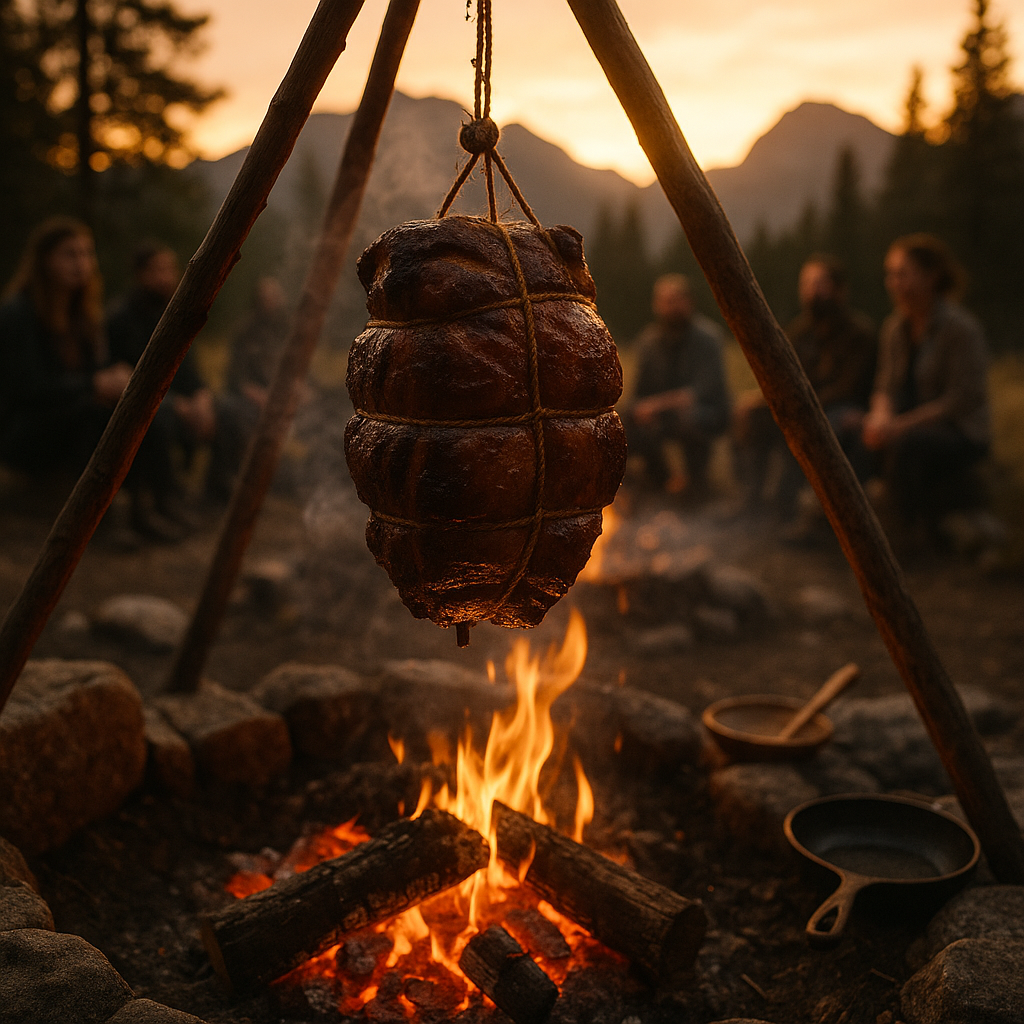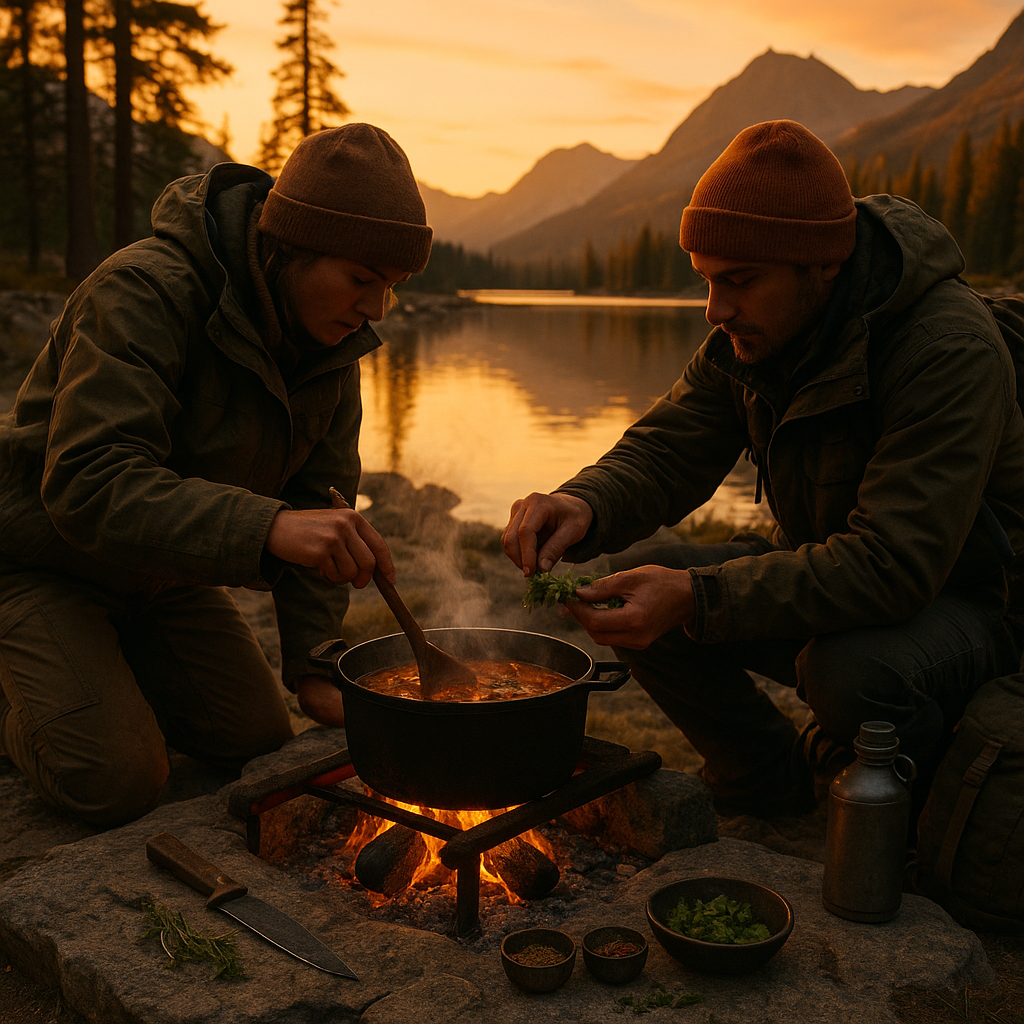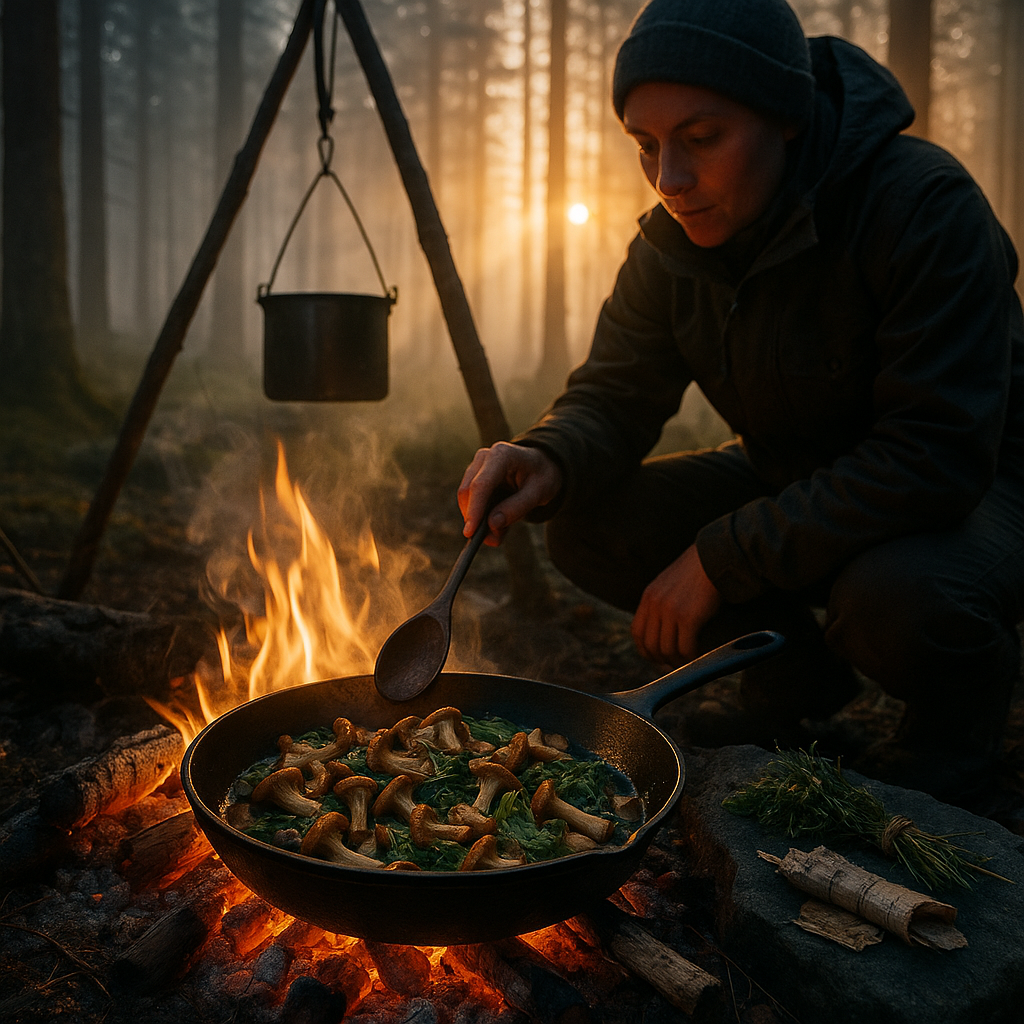Key Takeaways
Primitive recipes revive the art of ancient cooking, blending time-honored methods with modern practicality and offering a soulful connection to food preparation. Below, we explore why these timeless techniques remain relevant and enriching today.
- Fire transforms food and experience: Primitive techniques like fire pits and spit roasting infuse ingredients with deep, smoky flavors, crafting meals that reflect the rugged beauty of nature and the satisfaction of hands-on creation.
- Slow cooking nurtures patience and mindfulness: Methods such as clay-pot cooking and earth ovens require deliberate time and attention. These processes transform meal preparation into a meditative, intentional ritual, providing a welcome contrast to the pace of contemporary living.
- Ancient tools bring authenticity to modern kitchens: Stone grinders, wooden paddles, and rustic mortars allow cooks to form a deeper bond with ingredients. Their tactile nature delivers a sensory satisfaction that modern appliances often overlook.
- Traditional methods elevate simple, natural ingredients: Techniques like sun drying, fermenting, and stone baking enhance the fundamental flavors in straightforward ingredients, proving that minimalism can yield complexity and richness without overwhelming the senses.
- Fire and earth reconnect us to our roots: Cooking with primal elements like flames, coals, or buried heat kindles our relationship with ancient cultures and traditions, enriching the act of preparing and sharing meals with meaning.
- Mindfulness and well-being through ancient practices: By engaging all the senses and demanding presence, primitive cooking cultivates mindfulness, offering a therapeutic escape from daily chaos while grounding us firmly in each moment.
- Modern adaptations keep old ways alive: Tools such as cast iron skillets, stovetop-safe clay pots, and solar ovens help preserve these techniques in contemporary kitchens. Cooks can enjoy historic flavors and rituals without sacrificing convenience or safety.
Primitive recipes invite us back to a time when cooking was both necessity and art, promising not just nourishment but a deeper sense of connection and tranquility. In the journey ahead, we will explore the techniques, tools, and stories that keep these ancient practices alive in our modern world.
Introduction
Long before digital timers and electric gadgets filled our kitchens, there was the steady glow of fire, the sturdy cradle of clay pots nestled into hot coals, and the aroma of food transformed through patience and elemental care. Primitive recipes help us rediscover this nearly forgotten artistry, trading hurried routines for deeper engagement and the kind of flavors only informed by time and tradition.
Exploring these age-old techniques is more than nostalgia. It is a way to reconnect with ingredients, with meals, and with the generations of cooks whose hands built our culinary culture. When we blend primitive methods like stone grinding and open-flame roasting with today’s tools, we harness the power of mindfulness and authentic taste, while also regaining a sense of grounding often missing from busy lives.
Stay Sharp. Stay Ahead.
Join our Telegram Channel for exclusive content, real insights,
engage with us and other members and get access to
insider updates, early news and top insights.
 Join the Channel
Join the Channel
Let us embark on a journey to see how primitive recipes infuse our kitchens with warmth, meaning, and timeless wonder. Each dish is a link to the trail blazed by those who came before.
The Ancient Arts of Fire and Stone
Ancient cooking methods are more than relics of the past; they are enduring gateways to a richer connection with both our food and the land that provides it. As flames flicker and the aroma of wood smoke seeps into every bite, these recipes remind us how elemental techniques have nourished humanity for thousands of years.
Essential Primitive Cooking Methods
Three foundational techniques remain as relevant today as they were millennia ago, each one shaping distinctive flavors and fostering deeper engagement:
1. Direct Fire Cooking
- Hot stone cooking: Use river rocks or granite, heated to create natural griddles.
- Spit roasting: Skewer meats or vegetables on sturdy branches, rotating them slowly over open flames for even cooking.
- Coal bed cooking: Bury ingredients in glowing embers, letting them cook under heat and ash for a rich, smoky profile.
2. Earth Oven Cooking
Traditional earth ovens are among humanity’s earliest and most effective “slow cookers.” The method involves digging a pit, lining it with hot stones, layering food with damp greenery, and covering everything with earth to seal in heat for several hours. The result is impossibly tender, deeply flavored dishes, ideal for gatherings or celebratory feasts.
3. Stone Boiling
Long before pottery, early cooks heated rocks until red-hot, dropping them into water-filled vessels (such as animal hides or hollowed wood). By rotating fresh stones, they maintained a steady temperature, boiling stews or roots and making broths rich with earthy undertones.
The unique flavors and textures yielded by these methods are irreplaceable, evoking a sense of place and process that modern appliances simply cannot mimic.
Essential Tools and Materials
The simplicity of primitive cooking is part of its beauty, drawing on natural and resourceful materials:
Natural Elements:
- Hardwoods like oak, maple, and hickory for slow, even-burning fires.
- River rocks or granite to withstand high heat for cooking surfaces.
- Clay for constructing temporary ovens and baking chambers.
- Green leaves or reeds for wrapping food, imparting moisture and aroma.
Basic Tools:
- Reliable fire starter kits (from traditional flint and steel to accessible modern ones).
- Wooden spoons, spatulas, and paddles shaped by hand or whittled from branches.
- Forked sticks for spit-roasting over open flame.
- Natural fiber cords for bundling or suspending ingredients.
Today’s home cooks can bridge ancient practice and safety by integrating cast iron cookware or food-grade containers, preserving both the spirit and comfort of these methods.
Foundational Ingredients
Essential to primitive cuisine are ingredients drawn from the wild or harvested at their peak freshness, used with respect and minimal processing:
Plant-Based Staples:
- Wild grains, seeds, and legumes for hearth-baked breads or nourishing porridges.
- Foraged roots, tubers, and leafy greens that speak of place and season.
- Berries, fruits, and edible flowers, gathered at dawn for maximum flavor.
- Fresh herbs and wild aromatics for layering fragrance and complexity.
Animal Products:
- Game meats, whether roasted on spits or slow-cooked in pits.
- Fish and shellfish, often wrapped in leaves and baked in earth ovens.
- Eggs from wild birds, lending richness to simple dishes.
- Rendered fats and natural oils for flavor, preservation, and cooking.
Modern cooks can source analogous ingredients via local farmers’ markets, ethical suppliers, foraging guides (when properly trained), or specialty purveyors dedicated to heritage foodways.
Sacred Techniques and Rituals
In many traditional societies, the act of preparing food was inseparable from ritual and community. Cooking was woven into the fabric of social life, underscored by practices that built bonds and honored resources:
Stay Sharp. Stay Ahead.
Join our Telegram Channel for exclusive content, real insights,
engage with us and other members and get access to
insider updates, early news and top insights.
 Join the Channel
Join the Channel
Preparation Rituals:
- Ceremonial fire-lighting, with gratitude and intention.
- Blessing ingredients, sometimes with songs, sometimes in silence.
- Structured gathering of family or tribe, each person taking part in the process.
- Seasonal feasts, marking the cycles of sowing, harvest, and sharing.
These customs fostered food safety, wise use of resources, communal unity, and the passing down of knowledge. Even in modern kitchens, pausing for gratitude or involving others keeps the spirit of these rituals alive.
Adapting Ancient Methods for Modern Use
To bring primitive cooking into contemporary life, adjustments are necessary, balancing tradition and convenience:
Backyard Adaptations:
- Building safe and dedicated fire pits lined with heat-resistant stone.
- Constructing temporary earth ovens for slow-cooked feasts.
- Carving out outdoor cooking spaces, blending nature and modern comfort.
- Installing simple smoke management techniques to respect neighbors and regulations.
Safety Considerations:
- Adhering to local fire codes and ordinances.
- Observing food safety guidelines to prevent contamination.
- Ensuring adequate ventilation for indoor adaptations.
- Keeping emergency supplies nearby for added caution.
Such thoughtful modifications allow you to embrace the essence of ancient cooking without sacrificing peace of mind.
Seasonal Considerations
The seasonality of primitive recipes is key, mirroring cycles of abundance and scarcity and encouraging creative adaptation:
Spring:
- Focus on tender greens, fresh herbs, and simple earth-oven bakes that celebrate renewal.
- Embrace first harvest celebrations with feasts featuring wild shoots and sprouts.
Summer:
- Utilize solar cooking or grill directly over flames; preserve bounty via sun drying and simple fermentation





Leave a Reply